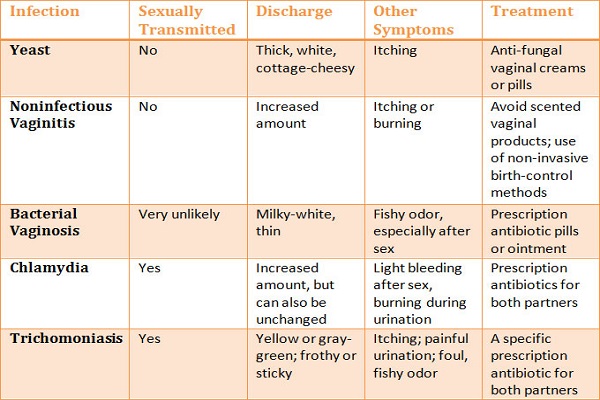Yeast Infection – Symptoms and Treatment
What is Yeast Infection?

Image : Source
Yeast infection or candidiasis as it is technically referred to, is a kind of fungal infection that affects humans. Candidia yeast is normally found in the body of humans but their growth is limited by the immune responses of the individual. Healthy bacteria present in our body also help to keep the yeast levels in check. Sometimes though factors arise which cause the yeast population to multiply rapidly. This condition where there is an overgrowth of yeast in the body is called candidiasis. Candidia albicans is generally the causative agent.
Fungal infections can affect several body parts such as the mouth, genitals, skin etc. If the infection is in the mouth it is commonly known as thrush or oral candidiasis. If it affects the vagina it is normally referred to as yeast infection. Candidiasis is a harmless disease but sometimes when it invades the bloodstream it becomes life-threatening. This condition is called candidemia. It is to be noted though that candidemia is more common in people who are already suffering from serious illnesses such as cancer, AIDS, etc, generally those patients whose immune system is severely compromised.
Factors which cause yeast overgrowth
- Having a high carbohydrate diet. A sugar rich diet can also contribute to yeast infection as yeast feeds on sugar.
- Leading a stressed out lifestyle.
- Overuse of antibiotics destroys the good bacteria in the gut which can lead to yeast overgrowth.
- Drinking lots of alcohol.
- A weak immune system can also contribute to yeast overgrowth.
- Wearing wet clothes can also cause yeast infections as yeast thrives in a moist environment.
Vaginal Yeast Infection

Image : Source
Our vagina hosts a small population of yeast along with a large number of bacteria. Amongst these bacteria, lactobacillus acidophilus is the most important one which helps to keep the other microorganisms in check. Sometimes however, situations arise which cause the yeast to spiral out of control leading to infection. Some of the common causes are taking antibiotics, weak immune system, and diabetes. High estrogen levels (during pregnancy and IVF) can also cause vaginal yeast infections.
Symptoms
1. Itching
This is the first and the most common sign of a yeast infection. There is always a constant itch around the vaginal area. In severe cases the infection spreads to the anus.
2. Discharge
If you are having vaginal discharge which is unusually thick and resembles that of cottage cheese then you have a yeast infection.
3. Inflammation in the vaginal area
Excess growth of yeast in the vaginal area causes the vaginal area to swell leading to inflammation. Inflammation of the region causes one to experience a burning sensation.
4. Burning sensation when urinating
Women who suffer from vaginal yeast infection often experience great pains when urinating. Urine being acidic in nature, when it comes in contact with the vagina causes one to experience searing pain.
5. Rashes
Due to the inflammation in and around the vaginal area women develop painful red rashes.
6. Foul smell
Many women complain of a foul smell emanating from the whitish discharge from their vagina.
7. Pain during sex
Yeast infections cause painful swelling in the vaginal. This might interfere with sex leading to a painful intercourse experience.
Preventive Measures
By following certain precautionary measures, women to some extent can avoid getting yeast infections. Some of the preventive measures are:
- Do not wear over tight clothes especially around the pelvic area. Wearing tight clothes might lead to moisture build-up which is a contributing factor for yeast infections.
- Similarly do not stay in wet clothes for long. If you have gone swimming try to get out of your wet clothes as soon as possible.
- Instead of synthetic materials go for natural fabric like cotton and linen which allow the skin to breathe.
- Stop using deodorants and douches in the vaginal area. Use of these products might tamper with the natural flora balance of the vagina.
- Keep your genital area clean. After every visit to the toilet wipe yourself from front to back to avoid further spread of infection from the anus to your urinary tracts.
- Regularly change your tampons or sanitary napkins as they can be a breeding ground for bacteria.
- Take ample probiotics as probiotics are known to restore the balance in favor of good bacteria.
Treatment Options
Treatment options for vaginal infections depend on the severity of the situation. If it’s a simple case of infection then a 1-3 day dose of an ointment cream, tablet or suppository will do the trick. However if the infection continues or recurs or there is a complication then you will have to take medications for 10-14 days continuously after which you would have to take medications once a week for 6 months at a stretch. Boric acid capsules are extremely effective against candidia albicans so your doctor might also recommend you to take boric acid capsules for up to 2 weeks.

